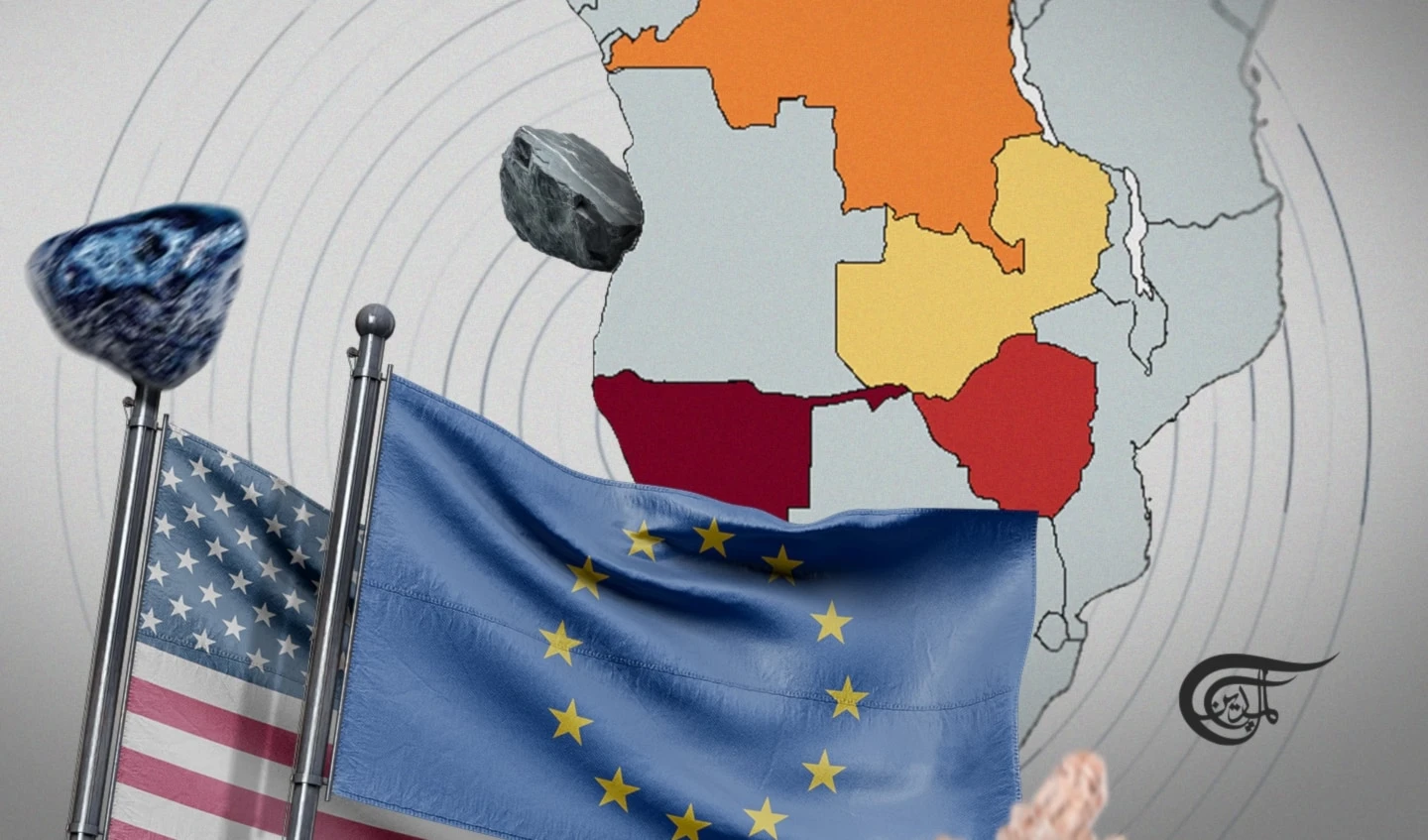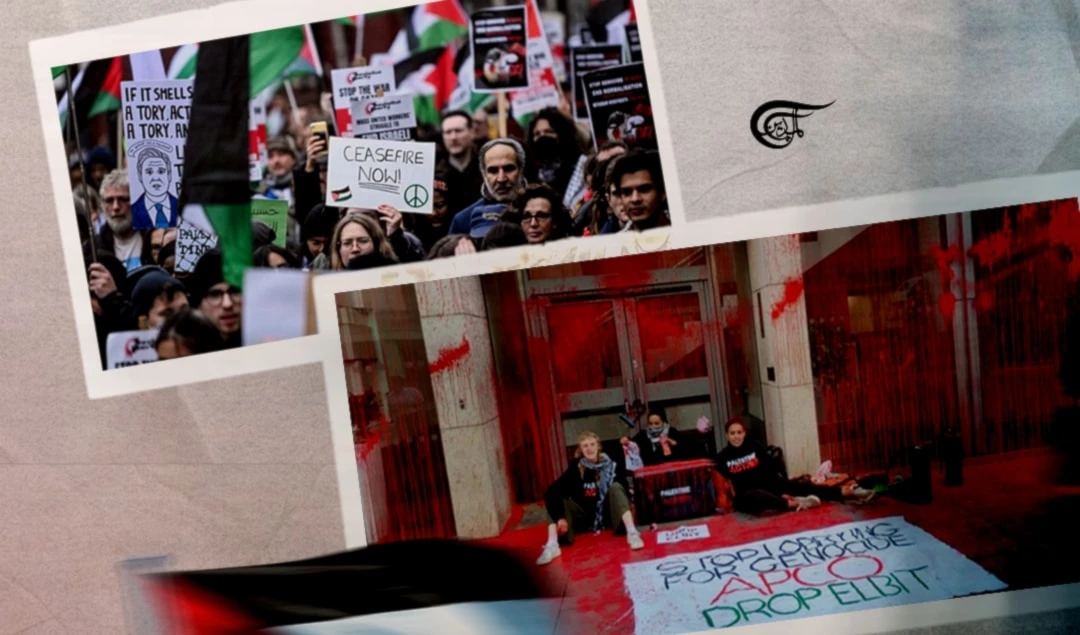A think tank determining the future of Iran, the entire Middle East
Brookings' influence extends far beyond academia, as its policies often serve as blueprints for legislative and administrative decisions.
-

Brookings Institution has played a critical role in the development of some of the most important foreign policy decisions in American history (Illustrated by Ali Al-Hadi Shmeiss; Al Mayadeen English)
Have you ever heard of the Brookings Institution? If you're not a politician in Washington, the answer is probably no, because outside of that circle, the name is hardly familiar. The Brookings Institution is one of the leading think tanks in North America and has long been an influential voice in shaping US foreign policy. Since its founding in 1916 by Robert S. Brookings, it has become one of the most powerful think tanks in the world.
Brookings' influence extends far beyond academia, as its policies often serve as blueprints for legislative and administrative decisions. Its extensive network of consultants and analysts provides expertise on a wide range of topics, from international economics to security studies, making it a key player in formulating the foreign policy strategy of US administrations. The think tank's close ties to both Democratic and Republican administrations show that Brookings plays an important role in the Washington establishment, not only influencing discourse but also shaping decisions at the highest levels of government.
Throughout its long history, the Brookings Institution has played a critical role in the development of some of the most important foreign policy decisions in American history that have had and continue to have a lasting impact on the global order.
How Brookings shapes US foreign policy
After World War II, the think tank played a major role in formulating the European reconstruction program commonly known as the "Marshall Plan". Brookings scholars provided a series of essential analyses and recommendations that shaped this far-reaching initiative, which was crucial to the development of the imperialist system as we know it today.
With the rise of China as a world power, Brookings experts have played a leading role in shaping US-China relations. In recent years, Brookings has published comprehensive studies on economic interdependence, military competition, and strategic cooperation. This work has significantly influenced US strategy in dealing with China on trade issues, cybersecurity, and military dynamics in the Asia-Pacific region.
After September 11, 2001, the think tank's assessments and policy concepts played a central role in the formulation of strategies for the so-called "war on terror", including the invasions of Afghanistan and Iraq. Brookings experts contributed to the strategy of "fighting terrorism", "rebuilding states", and "ensuring regional stability," shaping the Middle East policies of the Bush and Obama administrations.
Today, the Brookings Institution continues to develop strategies that guide US foreign policy, often in ways that are visible and accessible to the public. Its continuing influence is evident in its extensive studies of current geopolitical challenges to US imperialism. One example is Brookings' work on Iran, published in book form as "Which Path to Persia?"
How US imperialism might deal with the challenge of Iran
The Brookings publication outlines a range of strategic options that the US should consider to meet the challenge posed by Iran to US imperialism. The book offers a detailed description of possible strategies, ranging from diplomatic engagement to military intervention.
Diplomatic engagement and containment**
One of the strategies discussed in "Which Way to Persia?" is the diplomatic approach. It advocates direct negotiations with Iran to discuss concerns about its nuclear program and its behavior in the region. The goal is to find common ground and possibly reach a comprehensive agreement that limits Iran's nuclear capabilities in exchange for sanctions relief and economic incentives.
Closely related is the strategy of containment. It relies on a combination of diplomatic efforts, economic sanctions, and military deterrence to limit Iran's influence and capabilities without direct confrontation. By maintaining a strong international coalition, the US could effectively limit Iran's strategic options and pressure the Iranian government to submit to the US-led international order. This "diplomatic" section is titled by the authors "An Offer Iran Shouldn't Reject":
"In essence, it means offering Iran a “deal,” but one that also contains an implicit ultimatum: change your ways and you will be rewarded; don’t and you will be punished."
Military intervention
The military options presented in the publication range from limited airstrikes on key nuclear facilities to a full-scale invasion. Targeted airstrikes are designed to degrade Iran's nuclear capabilities and slow its progress toward developing nuclear weapons. According to the think tank's authors, this approach is designed to achieve military objectives while avoiding a major conflict.
In contrast, a full-scale invasion would require a significant military commitment and would aim to completely destroy Iran's nuclear infrastructure and, if necessary, overthrow the country's government. The authors point out that this option carries the highest risks, including high casualties, immense financial costs, and the potential for a full-scale regional conflict.
"The most important and obvious advantage of mounting an invasion of Iran is that it would “solve” all of Washington’s current problems with Tehran. Iran’s nuclear program would be obliterated. The regime that sup- ported so many terrorist, insurgent, and revolutionary groups that sought to harm the United States and/or its regional allies would be gone. Hizballah, Hamas, the Palestinian Islamic Jihad, and the like would have lost one of their most important backers. And Washington would no longer have to worry about how to deal with a regime it considers both threatening and maddeningly opaque."
Destabilization and regime change
Brookings also examines the controversial "regime change" strategy. In this approach, the US would support internal opposition groups, promote internal conflict, and conduct covert operations to destabilize the Iranian government. The ultimate goal would be to replace the Islamic Republic with a regime that serves US interests.
However, the authors point out the significant risks associated with this strategy. It could lead to unintended consequences, such as a protracted conflict, regional instability, and a humanitarian crisis. The implication, however, is not to discourage such a move but to emphasize the need for careful consideration and planning before embarking on such a course.
"Because the Iranian regime is widely disliked by many Iranians, the most obvious and palatable method of bringing about its demise would be to help foster a popular revolution along the lines of the “velvet revolutions” that toppled many communist governments in Eastern Europe beginning in 1989. For many proponents of regime change, it seems self-evident that the United States should encourage the Iranian people to take power in their own name, and that this would be the most legitimate method of regime change. After all, what Iranian or foreigner could object to helping the Iranian people fulfill their own desires?"
Using 'Israel' as a weapon
Another discussed and provocative option, somewhat jokingly called "Leave it to Bibi" by the authors, is to encourage "Israel" to take military action against Iran. This strategy involves indirect US support for an Israeli attack, thereby using "Israel's" military capabilities to accomplish something that might be politically and logistically difficult for the US to do.
"It is clear from discussions with Israeli military and intelligence officials and from numerous press leaks and reports that Israel is well under way in planning for a military operation to prevent Iran from acquiring nuclear weapons. (…) In short, there is considerable reason to believe that under the right (or wrong) set of circumstances, Israel would launch an attack—principally airstrikes, but possibly backed by special forces operations—to destroy Iran’s nuclear program. This could create either an opportunity for or a threat to American interests with regard to Iran and the broader Middle East. It could constitute an opportunity, and thus a possible policy option, if the United States would like to see Iran’s nuclear program destroyed but prefers not to do it itself."
The last lifeline: Containment policy
This strategy, clearly described as the last option, was pursued by the USA against the USSR after the Second World War, which eventually led to the "Cold War". The goal was to contain the "red scare" of communism. The strategy of containment was also behind the Marshall Plan. On the one hand, the US wanted to strengthen the Western European states so that they would not become "easy prey" for a socialist overthrow, and on the other hand, to create a clear relationship of dependency that would ensure the US a dominant role in Europe. In short, the aim is to prevent Iran from "exporting" the Islamic Revolution and to limit its influence in the region in general.
"In some ways, Containment may also be the easiest policy option toward Iran to conceptualize, both because it is effectively what the United States has pursued for most of the past 30 years and because it would be roughly congruent with how the United States contained the Soviet Union during the Cold War, and has contained a host of other antipathetic regimes such as Cuba and North Korea. (…) If Washington is once again unable to persuade Tehran to give up its nuclear program and its other problematic behaviors, if it is unable or unwilling to try to overthrow the regime, if it chooses not to invade or if it chooses not to use airstrikes or to encourage the Israelis to do so, then it may find itself dusting off and applying a policy of Containment toward Iran."
What we might be facing
The Biden administration's response to Iranian retaliation against "Israel" shows a clear preference for the diplomatic strategy described by the Brookings Institution. This relies on negotiation and containment rather than military confrontation and seeks to resolve the nuclear issue and regional tensions through dialogue and economic incentives. The US administration's initial commitment and launch of negotiations to rejoin the Joint Comprehensive Plan of Action (JCPOA) underscores this diplomatic approach. However, attempts to destabilize the Iranian government by strengthening the opposition, especially in the context of the protests in Iran in 2022, are also visible. Since October 7, however, progress at the diplomatic level has become increasingly unlikely, and a possible next Democratic Party administration may pursue a different strategy. However, there is also the factor that Iran has yet to retaliate for the execution on Iranian soil about 2 weeks ago. This can certainly be interpreted as an attempt by Netanyahu to draw the US into a direct conflict with Iran before the election.
However, the US strategic orientation toward Iran would likely change dramatically with a possible new Trump presidency. Trump's first term was characterized by a highly confrontational approach toward Iran, marked by the withdrawal from the JCPOA, the imposition of severe economic sanctions, and the assassination of General Qassem Soleimani. A second Trump term could signal a return to these aggressive tactics and potentially exacerbate regional tensions. Netanyahu's speech in the US Congress underlines the fact that it is precisely this policy that would be in his interest as well.
This strategic unpredictability is further complicated by "Israel's" ongoing genocide in Gaza and its exchange of fire with Hezbollah on the border with Lebanon, which would embolden rather than reassure a Trump administration. These conflicts raise the prospect of a wider regional war, in which both limited US military action and support for Israeli initiatives against Iran become increasingly plausible. The possibility of a full-scale regional conflict remains a realistic and frightening scenario.
"None of the policy options toward Iran have a high likelihood of succeeding, even as their proponents would define success. None is likely to protect all of America's national interests at low cost and with minimal risks. As should be apparent by this point, all of them are less than ideal solutions to the problems Iran poses. Indeed, one of the reasons that the Iran debate is so contentious and intractable is that there is no obviously right course of action. Instead, policymakers must choose the least bad from among a range of unpalatable alternatives."

 Julian Rivera
Julian Rivera
 8 Min Read
8 Min Read









